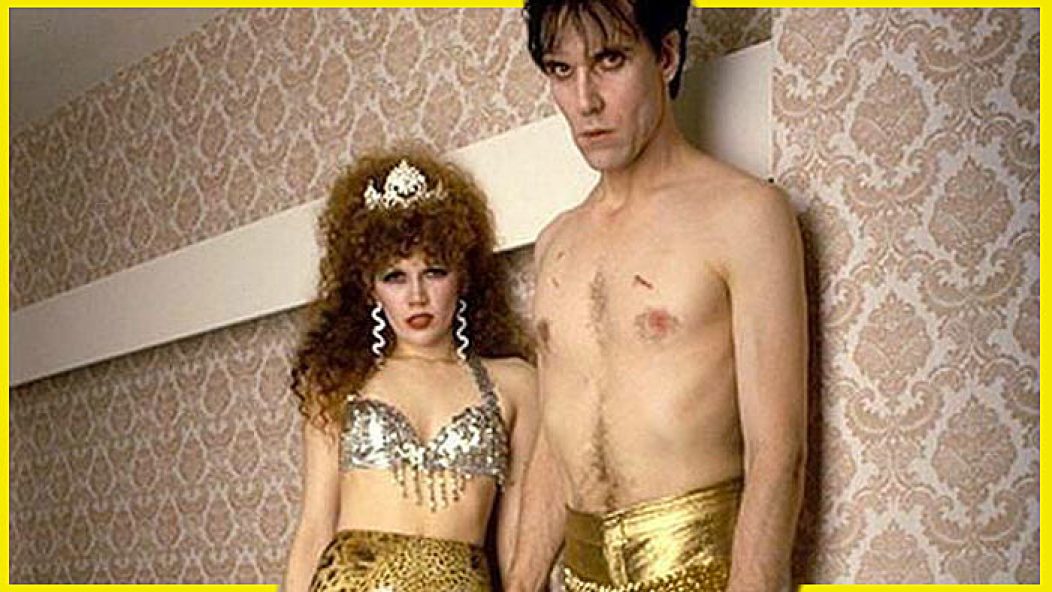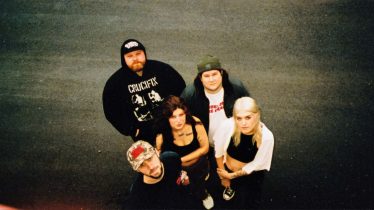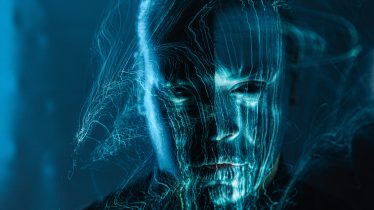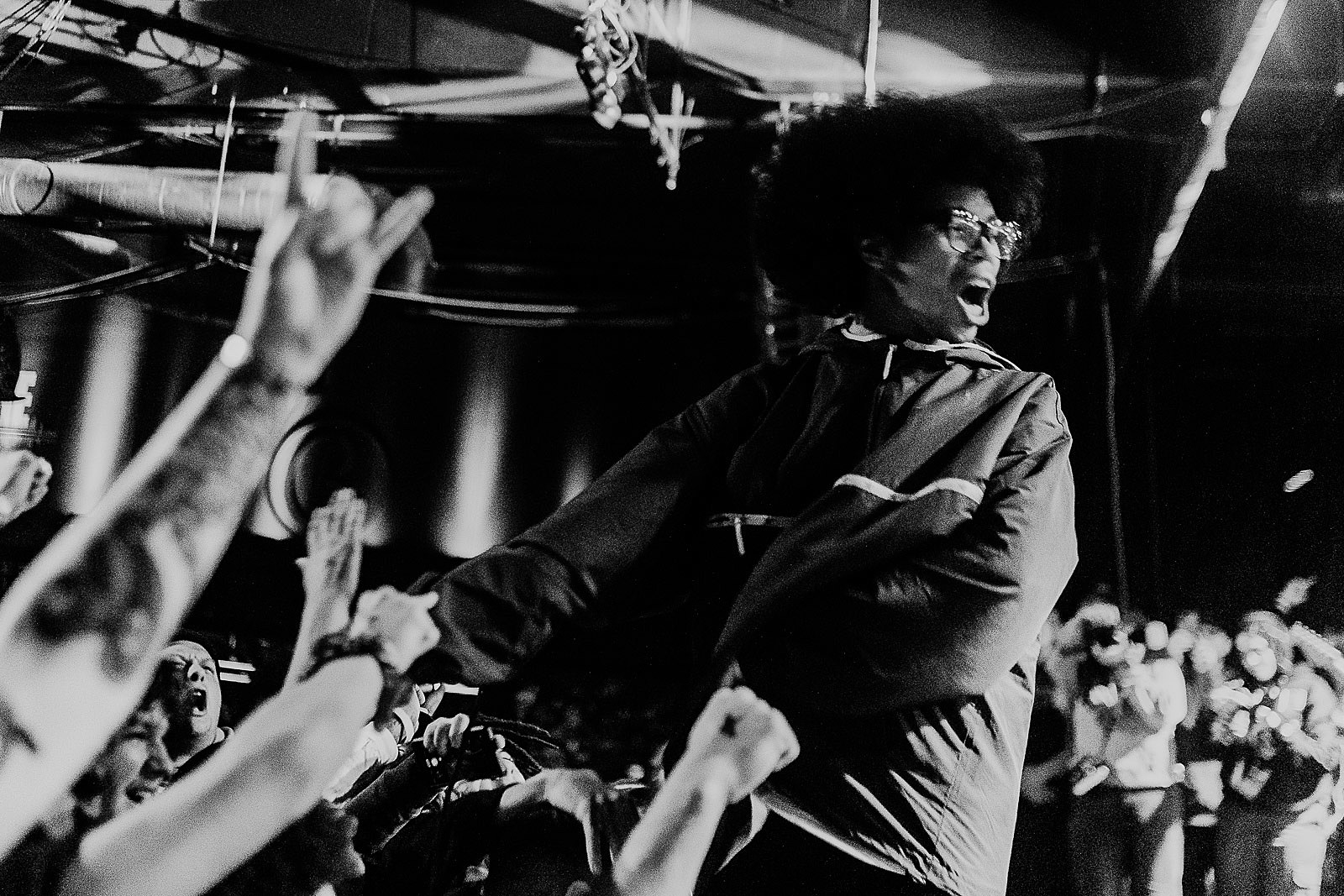
These 15 punk albums of 1986 mutated the underground even further
1986 was the year that speed metal and crossover (metal/core a la Cro-Mags’ The Age Of Quarrel) metastasized across the now-stale hardcore scene. The true sound of mid-’80s punk was the seeds of pop punk. Hüsker Dü were the kings of this, although Descendents really are the square root of every band who eventually played Warped Tour. But if you look at the records occupying this list of 1986’s top 15 punk LPs, the predominant sound of the best of this era fit British rock weekly New Musical Express’ 1985 description of Hüsker Dü: “They’re like the Buzzcocks grown desperate and huge.” Factor in the sound of the Damned on their 1980 full-length, The Black Album.
But the first notable ’60s garage-revival releases also dropped, along with a healthy dose of noisy avant-punk. Coming in from the outside was a return to mid-’70s punk basics. Of course, they were given enough of an ’80s facelift to duck accusations of nostalgia. Welcome to the 15 best punk albums of 1986.
Read more: 15 punk-rock records of 1979 that still rule four decades later
Government Issue – Government Issue
Government Issue’s evolutionary rate continued to outpace the Senate’s ability to pass a House economic stimulus package. Bassist Mike Fellows and longtime drummer Marc Alberstadt abandoned singer John Stabb and guitarist Tom Lyle midway through these sessions, replaced by Minor Threat’s Steve Hansgen and Sean Saley, respectively. The grooves weren’t typical hardDCore but more like recent Hüsker Dü or the Damned’s Black Album. Instrumentals such as “Visions and ?” and “Memories Past” flashed psychedelic, while speed rockers such as “Hear The Scream” resembled a poppy Motörhead. Check out Lyle’s deliciously explosive guitar on the pummeling “Even When You’re Here.”
Dag Nasty – Can I Say
By 1986, every D.C. punk band required at least one lineup featuring Minor Threat bassist Brian Baker on guitar. Government Issue and non-D.C. acts the Meatmen and Glenn Danzig’s Samhain understood what the Threat didn’t—he’s a hell of a guitarist. Forming Dag Nasty with drummer Colin Sears, bassist Roger Marbury, and singer Shawn Brown, Baker’s enormous Les Paul was so high on their debut LP’s mix, it shaved every nearby face listening. DYS’ Dave Smalley replaced Brown, and tunes such as “Values Here” and “Circles” joined Hüsker Dü in demonstrating that Buzzcocks and the Damned influenced 1986 punk more than Black Flag.
Read more: These 15 punk records from 1980 were complete gamechangers
The Cramps – A Date With Elvis
The casual listener may’ve been fooled otherwise, but even the mother and fathers of psychobilly (without ever sounding like their disciples) were also evolving. For one thing, the track “Surfin’ Dead,” commissioned for the horror flick Return Of The Living Dead, featured guitar heroine Poison Ivy dubbing on a bass guitar. Hence, the Cramps now featured a bass guitarist, with Fur Dixon. Lead spectacle Lux Interior’s lyrical focus went from B-movie horror to horny double entendres. Not a bad thing, especially when the results rocked as hard as “Can Your Pussy Do The Dog?”
Hüsker Dü – Candy Apple Grey
The first LP of Minneapolis’ aggro-pop kings under their new Warner deal should’ve been mind-blowing, considering their evolution since Zen Arcade’s release. But as good as it was, something felt slightly off on Candy Apple Grey. It enjoyed the clearer production of Flip Your Wig, released just six months before. But Grant Hart’s drums sounded like wet paper bags being smacked. Conversely, he wrote all the album’s obvious singles (“Sorry Somehow,” “Don’t Want To Know If You Are Lonely”), while Bob Mould fielded screamers such as “Crystal.” The album began a tension that eventually destroyed them.
Read more: These 15 punk records from 1981 have some of the year’s best music
Descendents – Enjoy!
Manhattan Beach, California’s finest simultaneously distilled their high school loser pop to its absolute pinnacle of perfection on their third LP while also dipping a toe in heavy-metal waters. Beefy tunes such as “Hürtin’ Crüe” and “Days Are Blood” featured some five-ton molten riffage that wouldn’t appear again across their storied career. Then there’s “Kids,” an ode to caffeine abuse traveling at a fitting pace, plus a bent toward fecal and fart humor that annoyed some. But the emotional core of Enjoy! is the superior cover of Brian Wilson’s “Wendy” and sensitive originals such as “Get The Time.”
Ramones – Animal Boy
The Ramones’ “adult” phase yielded possibly their best single, “Bonzo Goes To Bitburg.” The song has a fairly complex arrangement, a powerful melody and a message closer to singer Joey’s liberal politics than guitarist Johnny’s conservative bent. But it incensed Johnny to the point where he insisted on a title change (“My Brain Is Hanging Upside Down”) before including it on their ninth LP. Elsewhere, the Ramones dipped their toes into metal (“Somebody Put Something In My Drink”), hardcore (title track) and Spector-esque pop (“She Belongs To Me”), along with creating classic blitzkrieg boppers such as “Apeman Hop.” The LP was also produced by Plasmatics bassist Jean Beauvoir. The kings of the scene would deliver a solid 1986 punk album.
Read more: These 15 punk albums from 1982 paved the way for so much that followed
Lyres – Lyres Lyres
Upon the late-’78 implosion of leading Boston Stooges wannabes DMZ, maniacal singer/keyboardist Jeff “Monoman” Connolly took three-fifths of the band into the more garage-centric Lyres. Their second LP was the apex of the band and possibly the ’80s garage-punk revival’s first great LP. Danny McCormack wantonly abused the tremolo settings on his amp as much as the Smiths’ Johnny Marr did. This is a crucial 1986 punk album
D.I. – Horse Bites Dog Cries
After exiting Orange County melodic punk heroes the Adolescents in 1981, drummer Casey Royer moved to vocals while Rikk Agnew remained the guitar hero in D.I. With their second LP, D.I. continued the SoCal punk sound Royer and Agnew developed in both the Adolescents and early Social Distortion on ace tunes such as “Pervert Nurse” and “Johnny’s Got A Problem.” But blazers such as “Youth In Asia” and “Obnoxious” proved their ’core was as hard as any. Pennywise, the Offspring and tons more wore this record smooth.
Read more: These 15 punk albums from 1983 will still floor you decades later
Sonic Youth – Evol
The NYC noisemakers moved to SST Records for their third LP, just as label head Greg Ginn was distancing from hardcore. 1985’s Bad Moon Rising saw Sonic Youth writing something resembling linear song structures, Thurston Moore and Lee Ranaldo twisting their oddly tuned guitars into shapes that alternately jangled and skronked. With ex-Crucifucks drummer Steve Shelley’s dynamic drums in the fold, the band continued developing their experimental rock. Improved distribution meant Sonic Youth’s fame branched into the mainstream. Tracks such as “Starpower” were joining R.E.M. and the Smiths on college radio. That odd intersection is where alternative rock’s future begins.
Celibate Rifles – The Turgid Miasma Of Existence
Australia’s reigning punk kings’ sole 1985 release was a 45 coupling two covers—country singer Dave Dudley’s trucker anthem “Six Days On The Road” and Tony Joe White’s swamp-rocker “Groupie Girl.” Their third studio LP blasted 1986 apart with their explosive heavy-metal take on Radio Birdman’s post-MC5 guitar dexterity. While firing jazz chords across revved-up R&B grooves, Kent Steedman abused a wah-wah pedal better than any post-’60s guitarist had a right to. The year ended with Kiss Kiss Bang Bang, a blistering live LP recorded at CBGB.
Read more: These 14 punk albums from 1984 made the year heavier and meaner
Die Kreuzen – October File
This Milwaukee outfit spent the first half of the ’80s defining Midwestern hardcore, resembling a thrashier Germs who owned a jazz record or two. Their second album for premier Midwestern indie label Touch And Go was something else entirely. Parts sounded like the Cure gone heavy metal. Other tracks (“It’s Been So Long”) sounded like Aerosmith gone art punk. The keys were Brian Egeness’ tightly controlled guitar, the nimble rhythm section of bassist Keith Brammer and drummer Erik Tunison and Dan Kubinski’s dog-whistle vocals. Die Kreuzen were now America’s best prog-core band. There wasn’t a 1986 punk album like this, for sure.
The Leaving Trains – Kill Tunes
These Los Angelenos busted out two years previously with Well Down Blue Highway, fronted by chaotic, poetic frontman Falling James Moreland. The Leaving Trains were completed by brothers Manfred and Tom Hofer on guitar and bass, respectively, and drummer Terry Graham (The Bags, the Gun Club). Moreland and the Hofer brothers brought their vicious, literate punk tunes to SST this year, covering the Saints’ “Private Affair” to signpost their wild, intelligent dichotomy. Jason Kahn replaced Graham, Moreland unleashed new classics such as “She’s Looking At You” and “Cigarette Motel” and Manfred sowed some of punk’s most articulate six-string brutality atop the sublime proceedings.
Read more: These 15 punk albums from 1985 are the roots of alternative rock
Big Black – Atomizer
Big Black are essentially the revenge of techno-punk. Vocalist/guitarist/engineer Steve Albini and ex-Naked Raygun member Santiago Durango clanged and bashed their guitars across a pummeling Roland TR-606 drum machine and Dave Riley’s elasticated bass. Atop this noise (think an industrial Devo or Métal Urbain minus the synthesizers), Albini hollered the ugliest lyrics he could write, which sounded like cold reportage. When they adjourned in 1987, Albini became a sought-after engineer, working with everyone from Nirvana to Jimmy Page and Robert Plant to Frank Iero.
Dead Kennedys – Bedtime For Democracy
San Francisco’s finest had enough by 1986. Dead Kennedys shows had become flashpoints for violent goons who misunderstood that “Nazi Punks Fuck Off” was about them. The legal battle over H.R. Giger’s Penis Landscape poster’s inclusion in Frankenchrist also exhausted them, even as it elevated singer Jello Biafra to a popular free-speech advocate on TV talk shows. They played their last show Feb. 21, working on their final album, Bedtime For Democracy, across the summer. Besides the expected anti-authoritarian themes, tunes such as “Chickenshit Conformist” and “Anarchy For Sale” attacked punk’s homogenization. The end took the form of a great 1986 punk album.
Didjits – Fizzjob
Meet the pride of Mattoon, Illinois. The opening track of the Didjits’ debut resembled the MC5 dosed out of their minds on LSD. On “Jerry Lee,” crazed frontman Rick Sims yelps a tale of doing psychedelics with rock ’n’ roll pioneer Jerry Lee Lewis (“Look at me once, look at me twice/Watch me bang my head on the piano/…We watched him kill one of his wives/We didn’t care because we were so high”). This set Didjits’ template forevermore. Namely, basic rock ’n’ roll centered around Sims’ gonzo guitar and surrealistic lyrics. The reclamation of the basic punk spirit begins here. Truly one of the best punk albums of 1986.








